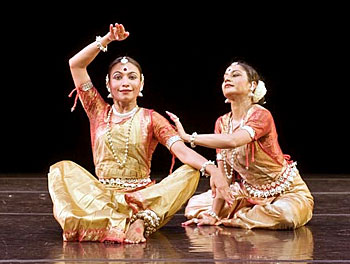 Batu Nritya also known by the name Batuka Bhairava is performed in the honour of Lord Shiva. Batuka Bhairava is one of the 64 terrific aspects of Lord Shiva known. The origin of Batuka Nritya is the Tantrism that had flourished in Orissa. Worship of Batuka Bhaiairava till date is prevalent in Orissa. In Puri District, on the day of Hera-Panchami till date it is the tradition that the image of Ekapada Batuka is painted on the walls on either side of the front door by the traditional Chitrakaras.
Batu Nritya also known by the name Batuka Bhairava is performed in the honour of Lord Shiva. Batuka Bhairava is one of the 64 terrific aspects of Lord Shiva known. The origin of Batuka Nritya is the Tantrism that had flourished in Orissa. Worship of Batuka Bhaiairava till date is prevalent in Orissa. In Puri District, on the day of Hera-Panchami till date it is the tradition that the image of Ekapada Batuka is painted on the walls on either side of the front door by the traditional Chitrakaras.
The custom also involves writing in a palm leaf. In the palm leaf a prayer is written seeking protection from the lord for all their activities. Then the palm leaf is hung on the door frame with the help of a kind of grass known as Juna. Rice cakes are prepared in every house-hold for offering to the God. The Tantric literature mentions a number of Batuka Bhairavas such as Tripurantaka Batuka, Banhibetala Batuka, Agnijiwha Batuka, Kala Batuka, Karala Batuka, Ekapada Batuka and Bhima Batuka etc. And that is the reason Batuka Nritya has become so popular in the land of Orissa because Batuka Nritya is an essential component of Tantrism in Orissa.
Linga Purana and Mahanirvanatantra give an elaborate description of Batuka Bhairva in three aspects and the results of their worship have also been explained elaborately in the texts.
Batu Nritya is an item of pure nritta and remains the most difficult item of Odissi. It begins with a series of sculptures poses representing such actions as the playing of a Veena, a drum, a flute and a pair of cymbals (such actions have been elaborately carved in Orissan temples). The dance is not accompanied, by any song or recitation, but throughout the item a refrain of rhythmic syllables is provided. The accompanying refrain is in the form of one line of ukuta and as this is recited in the tala, different jathi-patterns are improvised and are executed with feet. Some tala variations are also introduced and each sequence of the dance terminates with a tehdi known as katam. The last sequence is always in Jhula Pahapata tala and is performed, in a fast tempo.



















